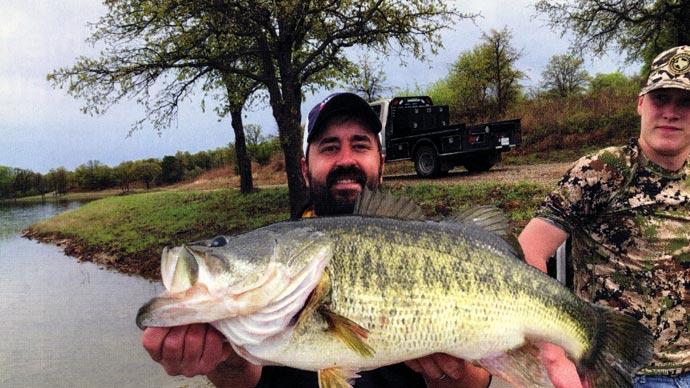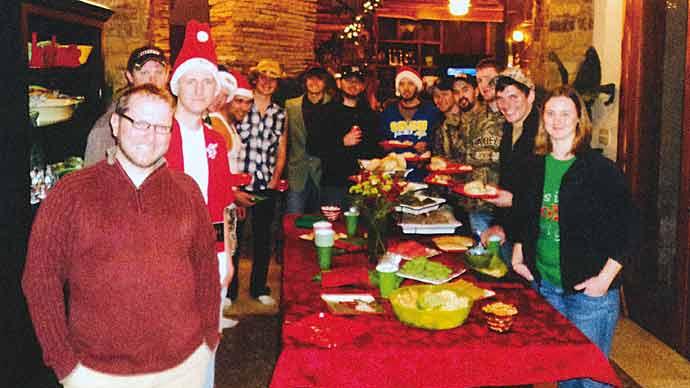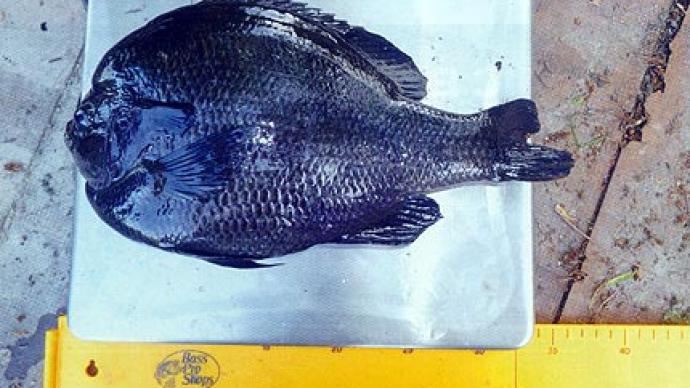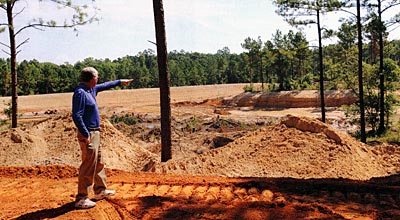
A more-than-rhetorical question was asked in a March 2018 post on the "Ask the Boss" Pond Boss forum: "Are Northern Strain Largemouth Bass actually inferior to Florida strain bass?"
The question was asked by Frank James, who lives near Shreveport, Louisiana, but has his dream pond in east Texas.
His original thought process was focused on designing the best bass fishing lake, which he did. Even before buying the land to build the lake, he brought in consultants to investigate the feasibility and figure out what it would take to carve his piece of paradise. He also wanted to know how much would it cost?
That was in April, 2014.
His final due diligence, that part where it was time to make big decisions, stretched out over several weeks, and after a few family confabs, the James family decided to pull the trigger and get to work.
Actually, Mr. James did an inordinate amount of due diligence and homework, tracking back several years, well before he started shopping for land. Throughout the process he was constantly seeking expert help via the Pond Boss forum, as well as many phone calls to experts and several private consultants.
He even ordered every back issue of Pond Boss magazine—and read them all.
He found a solid local contractor who'd built plenty of lakes and ponds, and who was very cooperative and empathetic about James' goals. That was an important move. Landowner and contractor need a solid, communication-filled relationship during their construction journey. That first meeting was January, 2015.
As the plan developed, the lay of the land and watershed size dictated a lake between 6-8 acres. Soils were excellent for building a lake, and that watershed was the perfect size.
Landowner and contractor reached their agreement, and the James family lake was set for construction.
Fast forward several months and lots of dirt work, and the family finally had the makings of their fantastic seven-acre bass fishing lake.
The next job was to come up with a stocking plan, which James was working on as construction progressed.
In October 2015, as the lake was filling with water, James was circling in on his final stocking plan.
He decided to follow a sound, mostly traditional forage fish stocking plan with fathead minnows, coppernose bluegill, some native-strains of bluegill, and redear sunfish. Forage fish were stocked in November 2015. To expedite fish growth, he set up several feeders that dispensed high protein fish food.
As his forage fish population expanded, he was making plans to stock bass with a goal of growing some huge fish, as well as having a balanced fishery with good catch rates. As he thought through it, he decided to buy some high-profile Florida strain Largemouth bass marketed for their genetic propensity to grow larger and faster than normal.
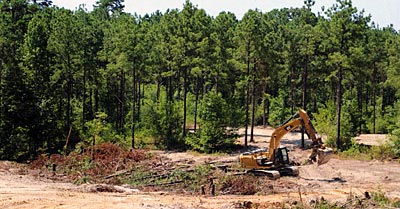
He owns and bemoans a few management mistakes along the way. He knew his soil was acidic, but didn't realize just how acidic it was. He added aglime, but doesn't think he added enough. "We should have added more lime at the beginning, and disked it in. We didn't. That limited the alkalinity." Low alkalinity limits the ability of water to take a plankton bloom, the necessary base of the food chain for a new lake. He tried to fertilize the lake once in the spring of 2016, but didn't get a bloom. James is convinced a combination of high water clarity, lack of fertility, and a shortage of spawning habitat for fathead minnows diminished the expansion potential of his forage fish. He also cites one other decision as a contributing factor. He thinks stocking tilapia finished the demise of his fathead minnows—before they produced necessary food for his soon-to-come, high-powered, highly-touted, genetically superior fingerling Florida strain Largemouth bass.
With the power of hind-sight, he wishes he'd added more lime, focused on fertility, added substrate where fatheads could lay their eggs on the underneath-side of firm objects, and not stocked the tilapia.
He's convinced these decisions were the impetus for the results he experienced that made him change course in November 2017.
After a discouraging fall electrofishing survey, he decided to make a change. The survey showed his high-powered bass were mostly 4-6 inches long with some in the 6-8-inch class, and maybe one in fifteen bass pushing 12 inches. For James. 17 months of growth should have yielded much better results. Bluegill numbers were three size classes, but there were zero newly hatched fish. Basically, the conclusion was that his lake just wasn't producing nearly the mass of baitfish needed to feed his bass for acceptable growth.
James envisioned a lake teeming with catchable, eight-pound bass by Year Three, with lots of two to five pounders as well. He figured his bluegills would knock on the door of a pound and a half by then, too.
Disappointed with his results, or the lack of, James decided to stock 100 feed-trained northern strain Largemouth bass, weighing between a pound to a pound and a half.
"Results were instantaneous," James said.
"Now, when we fish, we catch lots and lots offish. They are aggressive, they feed well, and I have different expectations."
So, there are a couple of questions that beg to be answered. "Are native strains of Largemouth bass inferior to Florida bass?" The answer to that is a resounding, "No." They're different. Nothing more and nothing less.
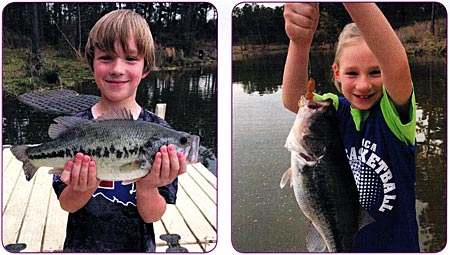
Florida bass live longer in warmer climates than northern bass. They grow much larger than their northern cousins. If you want a legitimate shot at double-digit bass, Florida genes are necessary. But, if your pond resides in something less than a warm, temperate, or subtropical climate, Florida bass are at risk. There's some debate whether Largemouth bass with some level of Florida genetics can live and grow large in some Midwestern states—in the warmer water under ice cover. Florida bass seem to be intolerant of rapid drops in water temperature. I've personally seen Florida bass, huge Florida bass, die in water that became cold quickly.
Northern bass are tolerant of colder water. They top out around 7-8 pounds and live 6-8 years in the warmer states. One bass, in northern Illinois, was documented to live to 22 years. Colder water, fewer heartbeats, longer lifespan.
Feeding habits of bass are interesting, too. I liken Florida bass to "Grey Poupon" fish. Finicky, picky eaters, I've watched captive Florida bass hover, turn toward a prey fish, move stealthily, and then pick it off—or pass on it. Northern bass, are totally different. They'll race in and demolish their food. Northern bass are highly aggressive by nature. "But," you ask, "Florida bass grow larger, right?" Yes, but they must eat, and eat a lot—they just eat with different habits than northerns, which brings up a second question. Will Frank James' plan to add these feed-trained bass influence a lake that has been deemed short of forage fish and overcrowded with bass early in its career? That will depend on Frank James' management decisions.
If he can increase alkalinity, keep his feeding program consistent, and establish a plankton bloom, he'll see two distinct populations of Largemouth bass begin to thrive, side by side. With a good bloom, he'll see increased productivity of the lake as a whole. When that happens, he'll see an increase in forage fish numbers, especially bluegills. Those feed-trained bass will depend on the feeders, but some will fall back on their instincts and help thin the herd of under-growing bass. Better yet, the northerns will have an opportunity to cross with those original Florida strain bass—I'd say that event is imminent. That creates the famed F1 cross, touted by some biologists and fish hatcheries as the best of both worlds—aggressive biters with the chance to grow to double-digits.
But, both consistent feeding and the lake's fertility level will determine the whole future of this fishery over the next few years.
The most important take-home point of Frank James' story is just how complicated pond management can be. As simple as it sounds, trying to sort through a lake's behavior can be tough. Now, going into the lake's third year, Frank gets to choose his management strategy based on hindsight becoming foresight.
Looks like Frank James has a few more important decisions to make in the near future.
Reprinted with permission from Pond Boss Magazine

